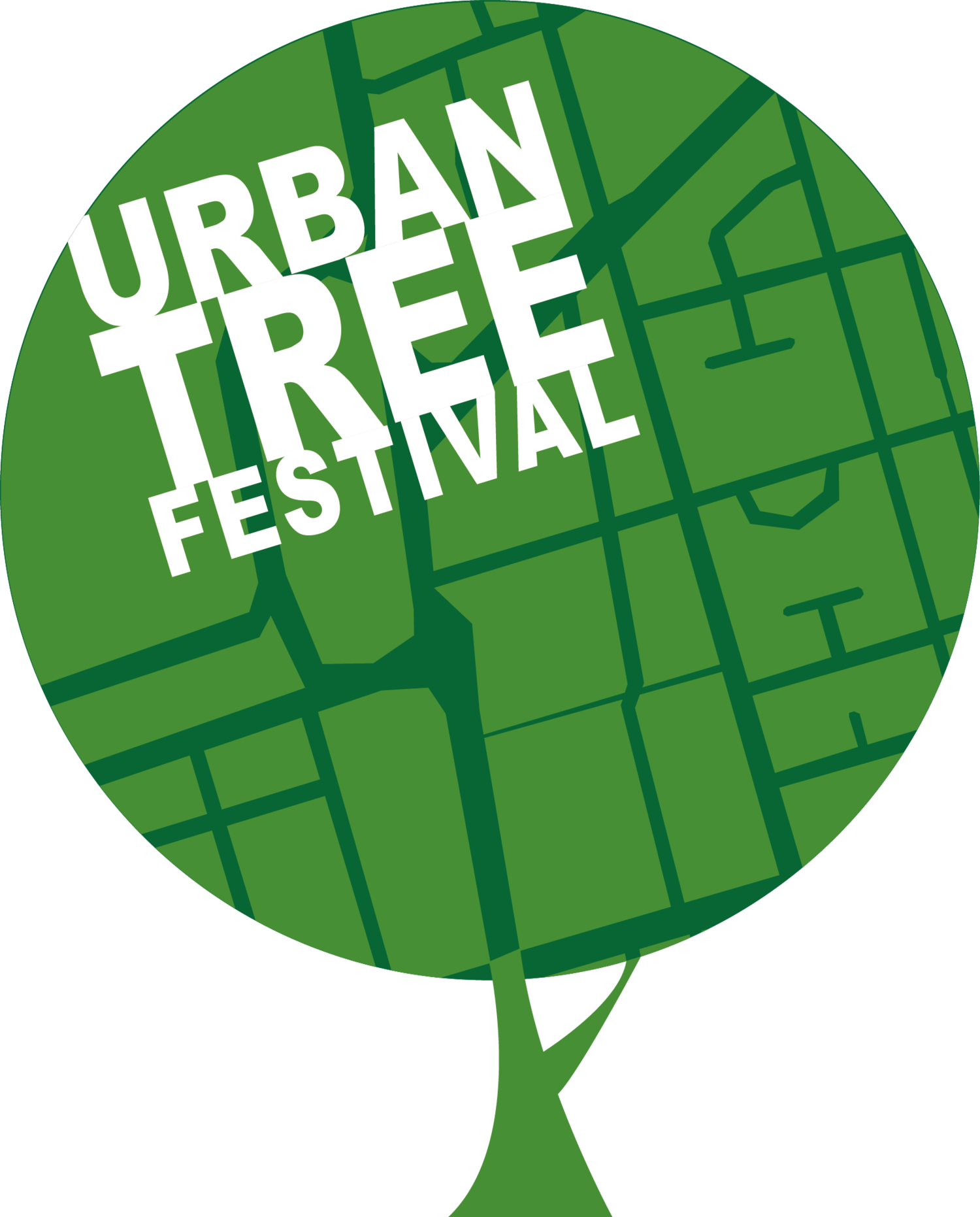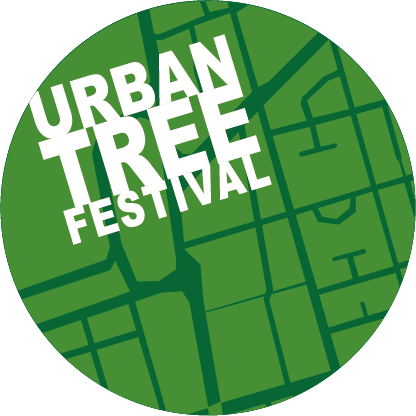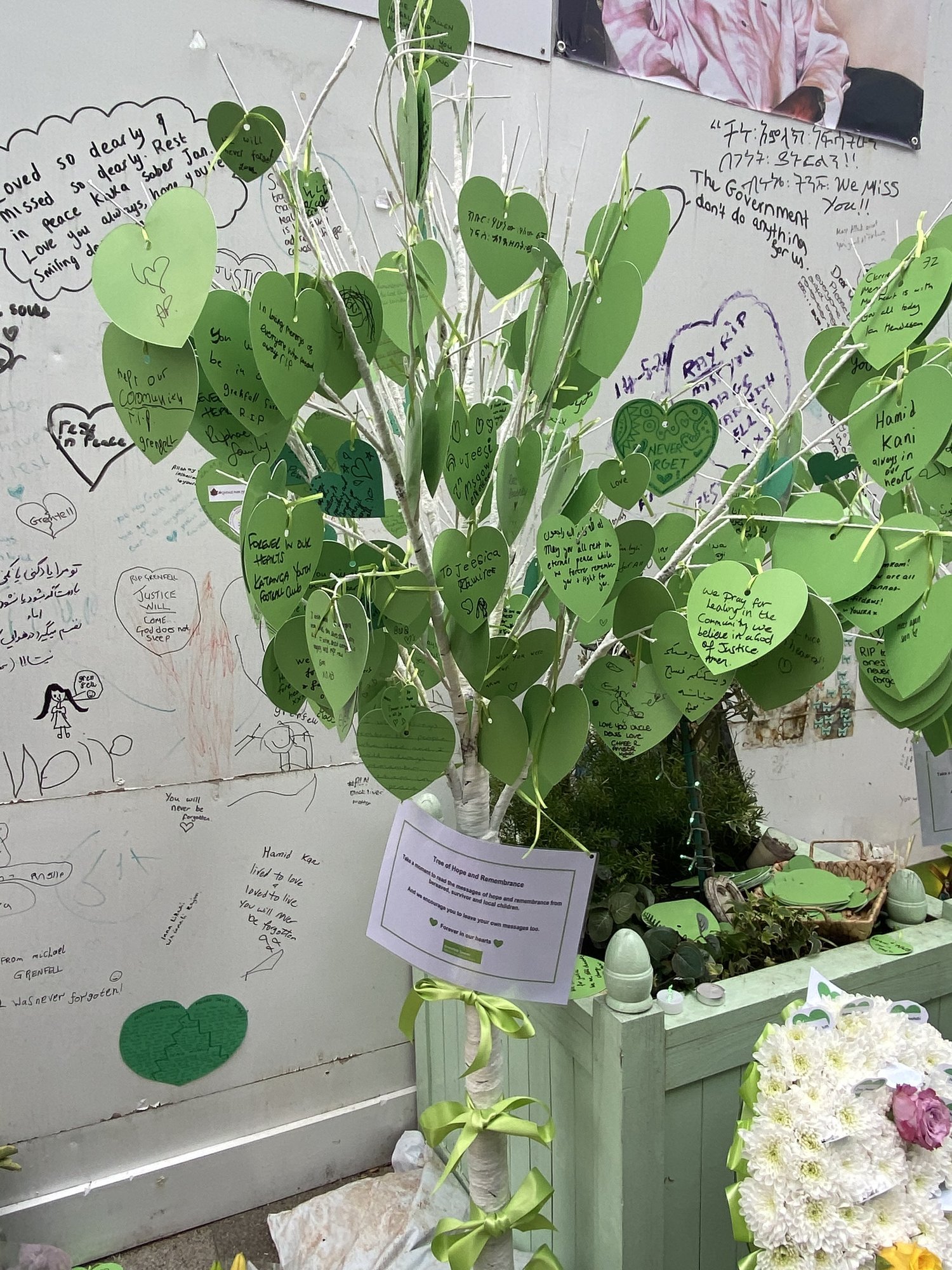Grenfell: Trees and hope
by Simon Edwards @TiCLme
I meet Marcia at Hope Garden. It is a garden in Maxilla Walk, North Kensington, a garden she and the Grenfell community created and named - a garden born out of the Grenfell Tower tragedy.
Marcia Robinson at Hope Garden
Maxilla Walk, was a forgotten, grey, concrete space tucked away under the busy and polluting, Westway flyover, in North Kensington. On 14 June 2017 it became the refuge for people escaping and affected by the Grenfell Tower fire – a tragedy that killed 72 people. It has become a focus and meeting place for the community. It is the site of The Wall of Truth, the Silent March starts there, street art has proliferated, and Hope Garden flourishes.
As well as helping establish Hope Garden and other community gardens in North Kensington, Marcia Robinson started the ‘Trees4Grenfell’ project - 72 trees to be planted to commemorate the victims of the fire. The planting started at Hope Garden with exotic trees, reflecting the diverse backgrounds of those affected by the tragedy.
Why trees?
Do people in urban environments instinctively turn to trees when tragedy strikes? Why? What does this response tell us about ourselves? Can trees help ‘heal’ us? If they do, is this a phenomenon we might use?
This blog details my observations from walking round Grenfell, looking at and mapping its trees, and talking to locals, while reflecting on these questions.
Why are trees important at Grenfell?
As Councillor for Goldborne Ward, Emma Dent Coad, explained to me, trees are hugely important to local people. As part of the development of Wornington Green recently, so many trees were lost that local people couldn’t stand it any longer. Tree protectors slept in the trees for four months, right through the winter, with local people bringing them food day and night.
When Lancaster Green, the area on which Grenfell Tower stands, was redeveloped to include a school, redevelopment of a leisure centre, and recladding of the Grenfell Tower, the amenity space that was afforded to Grenfell Tower when it was designed, was taken over by development. A number of mature trees were lost (replaced with small sticks), sports pitches built on, and the remaining green space ‘landscaped’ with humps making sitting out and playing difficult. Why is it that when our understanding of the health benefits of trees are so well-known, trees are still so easily lost during the development of social housing, and lost to the very people who need them most?
Tree images and symbols feature more frequently now around Grenfell though than I think would be the case if it was only attributable to the community response to the tree loss caused by the development of Lancaster Green.
People’s personal responses to the tragedy often focus on the trees. At the anniversary, and at other times, green ribbons are often tied around trees.
The green heart was chosen by local schoolchildren as the emblem to remember the tragedy. The simple explanation of the choice being that the ‘green’ came from the origin of the word ‘Grenfell’ – ‘green field’ and the heart for ‘love’.
Often trees and the Grenfell green heart appear together – sometimes the heart appears directly on trees.
The Al-Manaar Mosque asked ACAVA North Kensington for an art centrepiece for the Grenfell Tower Memorial. They created the mosaic flower sculpture with each petal representing a Grenfell group. Many groups wanted to take part – more groups in fact than there was space for petals so ACAVA helped local groups to create 5 new designs to run along the top of the hoarding. The designs they created were the tree leaves pictured here. Inside two of the leaves were words. Inside the oak leaf was the word ‘Justice’ (for the Justice for Grenfell Group) and in the other ‘Humanity’ (for the Humanity for Grenfell Group – Lisa Nash from ACAVA explained to me, ‘each leaf incorporated 72 gold flecks – it just seemed to make sense to follow up the flower with tree leaves, each tree leaf ‘hugging’ the word’. A sense then of tree leaves giving comfort and ‘holding’ the truth.
At the hoarding too, a ‘Tree of Hope and Remembrance’ - it’s heart shaped leaves, messages of hope and remembrance from the bereaved, survivors and local children.
My own contribution to the Trees4Grenfell project is a map of 72 existing trees in North Kensington, their layout forming a heart, its epicentre the tower. The trees were chosen purely for their location as part of the heart – each one a vital piece of the complete shape. They include trees in parks, streets, private gardens and estates. They touch on some of the richest and poorest parts of the Borough. You can download the map here.
I can’t help noticing though too, there are also mature trees on the Maxilla Walkway next to Hope Garden. Slightly unusual trees in London these, Paulownia tomentosa – the ‘Empress’ or ‘Foxglove’ tree. These trees have large fragrant blue/violet flowers in early Spring and their leaves are large, precisely ‘Grenfell green’ and strikingly heart shaped. I wonder whether the presence of these fresh, bright green leaves, on those terrible first days of acrid grey smoke after the fire, might have influenced the children’s choice of the green heart-of-hope motif itself?
Notice the heart shaped leaves of the Foxglove Tree
Perhaps as we struggle to process catastrophe especially that brought about by our own design, we reject ‘grey’ progress and turn back to ‘green’ and simpler nature. Green, in nature, promises growth, renewal, safety, vigour and hope.
Trees are surely the keepers of that promise. Their longevity and experience compared to our own, the way their leaves die and come back every year marking the passage of time, their slavish commitment to providing us, shelter, beauty, oxygen and food while cleaning up after our messes of pollution, climate change and flooding – it’s no wonder we call it ‘Mother’ Nature and in crisis, reach out to her and back to them.
Trees have also featured in the street art that has sprung up around Maxilla walkway – see some examples here.
and even a tree installation behind Maxilla Social Club
Perhaps most central to this collection though is this piece by artist Andrew Cooper, ‘HOUSING FOR OUR NEED NOT PROFIT’. Andrew painted this piece at Maxilla just two weeks after the fire – the tower was still smouldering when he started. He painted it over a period of 4 months with brush and acrylic paint. Andrew told me that he was inspired by the gardeners he saw tending the new Hope Garden – Marcia and the team included (though no-one, he says, is specifically represented in the painting)
HOUSING FOR OUR NEED NOT PROFIT by Andrew Cooper
Centre stage, rising up, in the picture, is a tree. It is a symbol of hope. The tree’s roots are buried deep in the soil of grey, City tower blocks. The tree is sucking up the poison below and, with the whole community tending and turning the soil, purifying the land and transforming it to a different kind of world. Behind the tree is cheerful, bright, housing, fit for human habitation.
The tree itself is a shelter and home for birds
Andrew is a passionate believer in the need for safe and quality social housing but his painting reflects more than this. It shows a need for societal change - in the things we value as a society. The gardeners and the trees together in the painting representing both the need and means for change.
Simon Edwards @TiCLme











